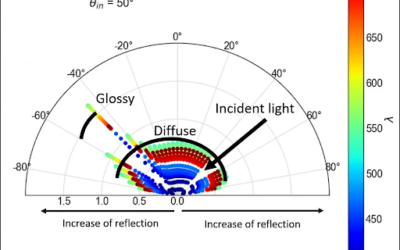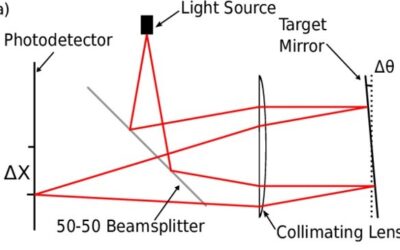Complex Optical Components from Fluids.
Researchers from the Israel Institute of Technology have developed a new technique to fabricate free-form optics by curing a liquid polymer. Traditionally, free-form optics are fabricated using complex CNC equipment that grinds a blank glass into its desired shape. This is not only a very expensive procedure, but is time consuming and requires very specific machinery to produce. In contrast, the team lead by Dr. Moran Bercovivi allows for fabrication of complex structures in minutes and with a surface roughness in the sub-nanometer scale. 
Figure 1. The technique is based in submerging a polymer into another liquid to contrarest the effects of gravity. Image from Israel Institute of Technology.
LiDAR for the Masses
Researchers at Stanford University have developed a new system that can use a CMOS-based image sensor to capture 3D data at a lower cost than traditional LiDAR systems. Their method is based on adding an additional layer of transparent piezo-electric material to a CMOS image sensor. This additional layer allows them to modulate the incoming light in a time-of-flight system. One of the biggest advantages of this system is the low cost when compared with traditional LiDAR systems. CMOS image sensors cost just a few dollars, and even an additional piezo-electric layer won’t increase their price dramatically. They are currently working on a working prototype, and Dr. Okan Atalar estimates that they are a couple of years for commercial development.
Startup to Follow: Circle Optics
Based in Rochester, NY, Circle Optics designs advanced imaging systems with wide field of view, high resolution, and low distortion lenses for the world’s largest aerospace, defense, robotics, autonomous vehicle, and immersive entertainment companies. They have been awarded a $1M USD from NSF to develop “Fast Panoramic Image Capture for Unmanned Aerial Vehicles” . Founded in 2017, Circle Optics has developed patented technology that enables the ability to capture the entire world in stitch-less, instant 360-degree imaging. This unique capability is may have applications in aerospace and unmanned flight, and enhancing immersive experiences globally. 
Figure 2. Presentation of CircleOptics at the GeniusNY program.





